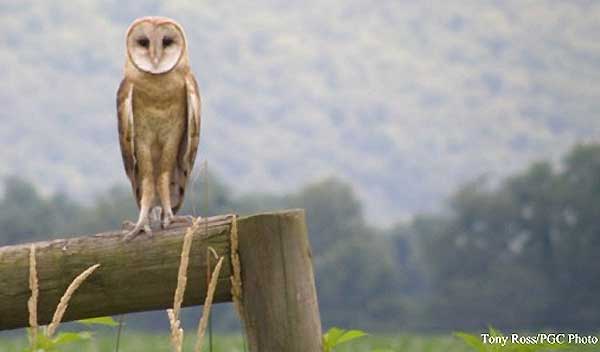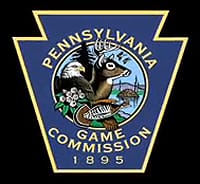Pennsylvania Game Commission Looking For Reports Of Dead Barn Owls


HARRISBURG, PA –-(Ammoland.com)- Pennsylvania Game Commission wildlife biologists are seeking information from the general public about dead barn owls that may have succumbed to starvation during the long periods of snow and ice that covered much of Pennsylvania this winter.
Information can be submitted to the Game Commission’s Region Offices. (For a list of region office contacts and the counties that each serves, please scroll to the bottom.)
“Because of the length of time that much of the Commonwealth has had snow on the ground with a hard crust, barn owls have had an extremely difficult time attempting to catch meadow voles, which are their primary prey,” said Dan Mummert, Game Commission Southeast Region Wildlife Diversity Biologist and regional coordinator of the agency’s Barn Owl Conservation Initiative.
“Therefore, we currently are in what is likely the highest annual period of mortality for these owls. We need landowners’ cooperation in reporting any dead barn owls, especially those barn owls that have been banded, so we can learn more about such things as fledgling dispersal, habitat usage, causes of mortality and average lifespan.”
To reinforce the Game Commission’s concerns, Mummert cited studies that show “prolonged snow, especially when it covers the ground uniformly and at depths greater than about 2.5 to 3 inches and when accompanied by exceptionally low temperatures, has often been identified with increased owl mortality.”
“The most carefully researched study of this was in Utah over the winter of 1981-82,” Mummert said. “As part of this study, between Jan. 1 and Feb. 28, 74 severely emaciated barn owls were found dead. Most perished during a period of two weeks when there was snow cover 7.8 to 9.8 inches deep and mean daily temperatures of 16 degrees Fahrenheit. The overall mortality rate during this period was unknown but the breeding population fell by 40 percent from 1981 to 1982.”
Mummert pointed out that the conditions noted in the Utah study existed over much of Pennsylvania this year. However, Mummert also noted that 65 to 75 percent of barn owls die within their first year, and starvation is likely the main cause of death.
“During the first Pennsylvania Breeding Bird Atlas (PBBA), which was partially funded by the Game Commission, barn owls were found in 56 of the state’s 67 counties,” Mummert said. “By the Second PBBA, the barn owl distribution had steeply contracted, especially from the two southern corners of the state, and they were found in only 30 counties. Additionally, there was a 53.4 percent reduction in number of occupied blocks between the two atlas data collection periods.
“The really unfortunate point is that there were only 20 years between atlas periods, which means that there has been a steep decline in barn owls in Pennsylvania. And, even more unfortunate is the fact that we have seen other species with even steeper declines.”
Since 2006, Game Commission Regional Wildlife Diversity Biologists have banded 781 barn owls and have confirmed nesting at 138 different nest sites throughout the state. So far, agency biologists have had 32 band recoveries, of which, half were returned during winter.
“Many of the barn owls were recovered soon after conditions we recently experienced; long lasting snow cover with icy crust,” Mummert said. “A good percentage of the remaining band returns were from young fledglings recovered dead near their natal nest site.”
Barn owls have large clutches, with an average of five chicks, while some have as many as 10 in one clutch.
“It appears to be nature’s strategy of having large clutches to overcome high mortality rates,” Mummert said. “The barn owl has not been well studied in Pennsylvania and band returns are a cost effective way to learn about such things as fledgling dispersal and life expectancy.”
Game Commission biologists have learned from the 32 banded barn owls that have been returned that:
- The average fledgling dispersal was 58 miles;
- The furthest dispersal was 325 miles where the band was recovered in the northeast corner of North Carolina;
- The average lifespan was 14 months;
- The longest surviving owl recovered was nearly six years old; and
- Two of the banded barn owls were found in New Jersey by a barn owl researcher. These owls were alive and actively nesting in barn owl nest boxes in New Jersey.
Barn owls stand about 10-15 inches tall and have a wingspan of 41-47 inches. Their distinctive long heart-shaped facial disk has caused this owl to be referred to as the “monkey-faced owl.” They have a nearly pure-white to dusky breast with small spots, small dark eyes, and have a hissing or scream-like vocalization. They are found in agricultural fields, grasslands, and other open areas. They nest in cavities of large dead trees, rock crevices and even burrows in riverbanks. More often, as their name implies, they nest in barns, silos, abandoned buildings and artificial nest boxes. Because barn owls feed primarily on rodents, they are beneficial to farmers. An average family of barn owls can consume up to 3,000 rodents during the course of a single year.
For more information on barn owls, visit the Game Commission website (www.pgc.state.pa.us), and click on “Wildlife” in the menu bar at the top of the homepage, then click on “Barn Owl Conservation Initiative” in the “Wild Birds and Birding” section.”
- Northwest Region Office, P.O. Box 31, Franklin, PA 16323. 814-432-3188. Butler, Clarion, Crawford, Erie, Forest, Jefferson, Lawrence, Mercer, Venango and Warren counties.
- Southwest Region Office, 4820 Route 711, Bolivar, PA 15923. 724-238-9523. Allegheny, Armstrong, Beaver, Cambria, Fayette, Greene, Indiana, Somerset, Washington and Westmoreland counties.
- Northcentral Region Office, P.O. Box 5038, Jersey Shore, PA 17740. 570-398-4744. Cameron, Centre, Clearfield, Clinton, Elk, Lycoming, McKean, Potter, Tioga, and Union counties.
- Southcentral Region Office, 8627 William Penn Highway, Huntingdon, PA 16652. 814-643-1831. Adams, Bedford, Blair, Cumberland, Franklin, Fulton, Huntingdon, Juniata, Mifflin, Perry, Snyder and York counties.
- Northeast Region Office, P.O. Box 220, Dallas, PA 18612. 570-675-1143. Bradford, Carbon, Columbia, Lackawanna, Luzerne, Monroe, Montour, Northumberland, Pike, Sullivan, Susquehanna, Wayne and Wyoming counties.
- Southeast Region Office, 448 Snyder Rd., Reading, PA 19605. 610-926-3136. Berks, Bucks, Chester, Dauphin, Delaware, Lancaster, Lebanon, Lehigh, Montgomery, Northampton, Philadelphia and Schuylkill counties.
